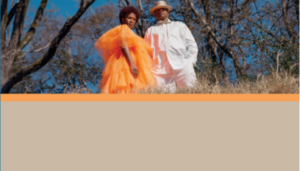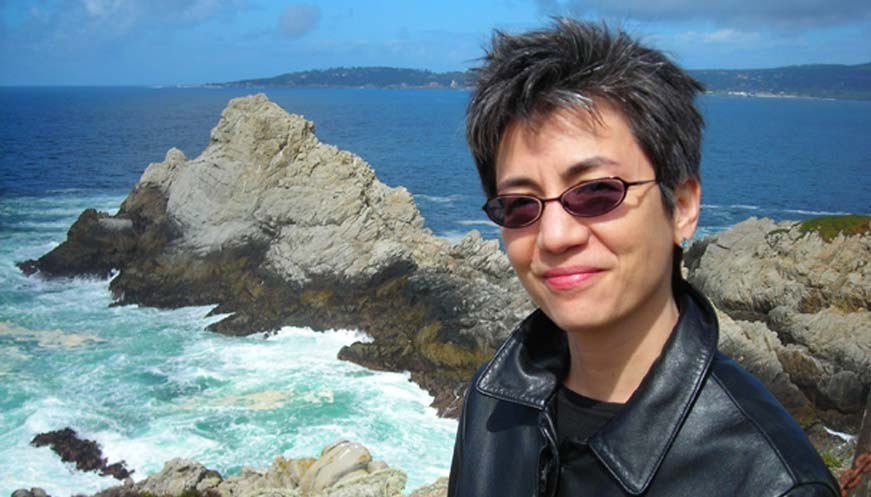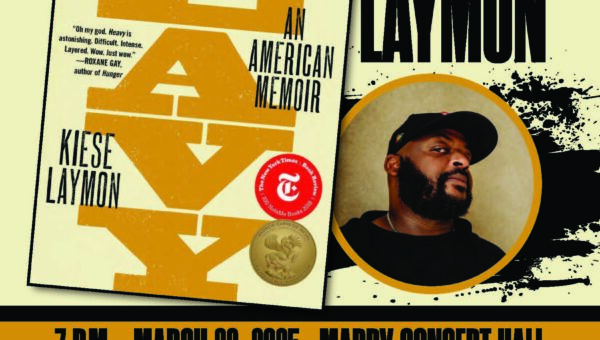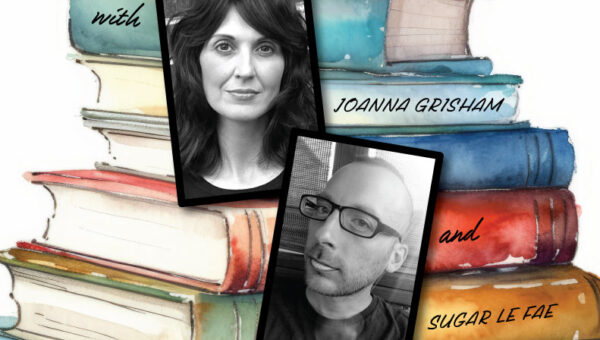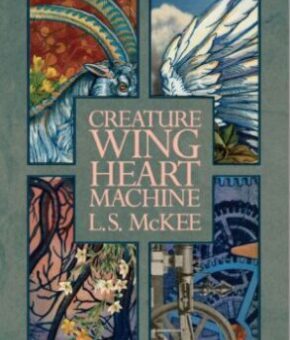Amy Wright: You said you’d like if scientists read your recent chapbook, Resplendent Slug (Ghostbird Press, 2016). What would they notice or appreciate about these poems that a lay audience might not?
Kimiko Hahn: I hope that my snippets of description do justice to the glowy things, that these are recognizable. I hope everyone finds humor in them.
Wright: The New York Times inspired many of the poems in Toxic Flora and you thank their science writers in Brain Fever. How do you hope your poems inform current events or scientific discoveries?
Hahn: I enjoy writing on a range of subject matter and in the case of the natural world, I hope to draw attention to the outer real world, even though I dovetail into the personal. For those not interested in science, these poems may be an offbeat way of learning about, say, extinction. For others, like myself, the sciences are intrinsically captivating, and a kind of portal into other themes and issues. . . But how would my poems inform events? By bringing artists (the “cultural intelligentsia”) and artwork into the conversation.
Wright: How does integrating various voices, like Sei Shōnagon and Steven Jay Gould, inspire your work?
Hahn: I’ve been called magpie as far as range of subject and reference. My first draw is usually language, which is certainly the case with Gould. The language of science is so exotic to my ear. Sei Shōnagon’s pillow book offers form, such as the list, and a subjectivity that is tantamount to self-mythologizing. I love that.
Wright: Throughout your books—whether you are writing about a mother’s death, daughter’s coming of age, or neuroscience—insect metaphors recur. Why are mosquitoes, ants, bees, etc., familiar reference points for you?
Hahn: Bugs, at least from a human’s point of view, exist in a miniature world that is just plain weird. The particulars about their lives are as weird and fascinating as folk tales: cannibalism, abduction, transformation from aquatic to aerial, and so on. And I very much respond to the folk tales and the insect peculiarities.
Wright: Have you had any memorable encounters with insects?
Hahn: My sister and I had bunkbeds and being the older one, I was on the top. I had a small window and for several mornings one week I noticed tiny pyramids of sawdust. I thought fairies must have left them, even though a part of me knew that fairies didn’t exist. When I finally told my parents, our dad was furious that we had termites. I guess I was eight.
Wright: You open Brain Fever with an epigraph from Sei Shōnagon detailing, “Things that make one’s stomach churn.” Why is including the distasteful or detested important to your poetry?
Hahn: My father, a visual artist, told me that it was easier to paint evil things than good—hence I grew up with large canvases of medusa, skeletons, bird-with-teeth. My husband Harold Schechter writes true crime—extending my family’s sensibilities. I believe that duality creates energy in a text. For instance, I just finished a collaboration with photographer Lauren Henkin, It Isn’t Black-and-White. The interest was how black and white imagery and ideas play off each other, energize the results.
Wright: Where and when should I look for this collaboration?
Hahn: I’m not sure, so her website might be the best: www.laurenhenkin.com.
Wright: Will you talk about how literary translation informs your poems?
Hahn: I was a pathetic student of Japanese—I still have nightmares about that period in my life. But the fascinating history has stayed crucial to my poetics: the women in the Heian era dominated Japanese writing. I don’t know where I would be without Seidensticker’s translations of The Tale of Genji and Kawabata’s Snow Country; Earl Miner’s work on the nikki; Hiroaki Sato’s translation of the poet Princess Shikishi. Burton Watson’s translations from Japanese and Chinese. I am beholden. I would not be the poet I have become without these works to inspire, inform, captivate.
Wright: What characterizes your favorite translations?
Hahn: Since I only translate with a Japanese native-speaker at this point, I’d say that I look to experience tension, tensions—the same charge that I expect from stunning art. I love to, and very often use HAIKU anthology by Faubion Bowers because he includes as many translations of a single haiku that he could find. Inspiring. As for other translators, Seidensticker was known for his clean, unembellished translations and I appreciate that sensibility.
Wright: Do you think the language of the sciences is also a form of translation?
Hahn: For me, personally, the language is part narcotic, part portal. Perhaps those are aspects of translation.
Wright: You were recently elected President of the Poetry Society of America. What do you hope to bring to the field of poetry through this leadership role?
Hahn: I would like to see an expansion of the translation events that Alice Quinn so beautifully presents.
Wright: What are you reading and working on now?
Hahn: I am having a bit of a Tanizaki festival! …. What am I working on? When Brain Fever came out, I was pretty certain what my next collection would be. Another science-influenced book. But I am in a fortunate place in my writing life: I can take my time. Because I have a number of series at the moment, I would like to see them published as chapbooks—like Resplendent Slug. I am also playing around with material that is not related to science. (I don’t think.) (Maybe.)
Wright: What is your favorite Jun’ichirō Tanizaki novel?
Hahn: My favorite is a strange classic, a book of his essays, In Praise of Shadows—although now that I’ve declared that, I need to reread it!
Wright: Do you have any plans to write a memoir or other work of nonfiction?
Hahn: I have a collection of paragraphs that might be prose poems or very small chapters in a larger picture.
Wright: A number of your poems, including “The Fever” and “The Extinction of Frogs” express concern for environmental degradation. How do you see the role of poetry in terms of activism or eco-criticism?
Hahn: Poetry as “a function in these arenas”? If activists and critics feel compelled to make use of a poet’s offerings—how absolutely validating. Or, if someone responds to a poem that directly or indirectly raises the issue, beautiful. The poem as conveyance is tricky, given the place of poetry in the U.S. I hope that whoever reads or hears a poem of mine will be moved and take note of the several contexts. One being the social.
